Vote for your favorite news stories of 2010 on Universe Today! Below is a survey of 17 news topics that we published this past year (some are single articles, some are a combination of articles, such as the X-37B space plane, which includes prelaunch, launch, on-orbit and landing articles.) The stories were chosen based on the “most viewed” articles this year. Below the survey is a review of the choices, with more information and links to articles. After reviewing the choices, rate each story topic, with 1 being the highest rating, and 10 the lowest rating. If you feel an article doesn’t deserve Top 10 honors, choose “Not in Top 10.” We’ll tally up the results and post the Top 10 list on Universe Today next week. Feel free to leave *short* comments either in the comment section or on the poll about why you chose as you did, and we’ll re-post some of the best. Make sure you click “Done” when finished. Thanks for taking part in this poll!
Create your free online surveys with SurveyMonkey, the world’s leading questionnaire tool.

1. The Discovery (or not) of Exoplanet Gliese 581g
In September, astronomer Steven Vogt and his team announced what they claimed was the closest Earth-sized planet found so far that also exists in the habitable zone around its star. The planet, During a press conference, Vogt was quoted as saying, “Personally, given the ubiquity and propensity of life to flourish wherever it can, I would say, my own personal feeling is that the chances of life on this planet are 100 percent. I have almost no doubt about it.” Although the announcement created a lot of excitement, almost immediately after the announcement, another group of planet hunters said they could not find evidence of the planet in their data.
2. Radar Images Reveal Tons of Water Likely at the Lunar Poles
The Mini-SAR radar instrument on the Chandrayaan-1 spacecraft and the Mini-RF instrument on the Lunar Reconnaissance Orbiter are revealing there are likely massive amounts of water in the permanently shadowed craters at the poles, with over 600 million metric tons at the north pole alone. “If that was turned into rocket fuel, it would be enough to launch the equivalent of one Space Shuttle per day for over 2,000 years,” said Paul Spudis, principal investigator for the Mini-SAR.
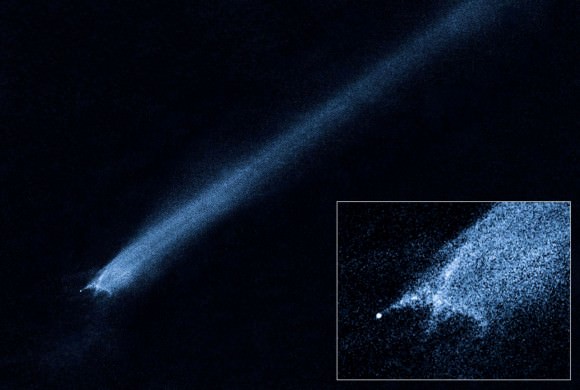
3. Asteroid Collision Seen by Ground-Based Observatories and Hubble
We reported that on January 6, 2010, ground-based observatories spotted evidence of an asteroid collision in the asteroid belt. Then in February, the Hubble Space Telescope took a look at the mysterious X-shaped debris pattern and trailing streamers of dust. With Hubble’s sharp vision, astronomers believe a head-on collision between two asteroids actually occured. Astronomers have long thought the asteroid belt is being ground down through collisions, but such a smashup has never been seen before.
4. Thirteen Things That Saved Apollo 13
To celebrate the 40th anniversary of the Apollo 13 mission, Universe Today interviewed NASA engineer Jerry Woodfill, who was on console in NASA’s Mission Evaluation Room the night the explosion occured in the Command Module of Apollo 13. Jerry came up with “13 Things That Saved Apollo 13,” discussing different turning points and technicalities of the mission. Jerry also answered readers questions, and we also were able to publish exclusive, never-before-seen images of the Apollo 13 Crew on the aircraft carrier after they safely splashed down. This series was a Universe Today exclusive.
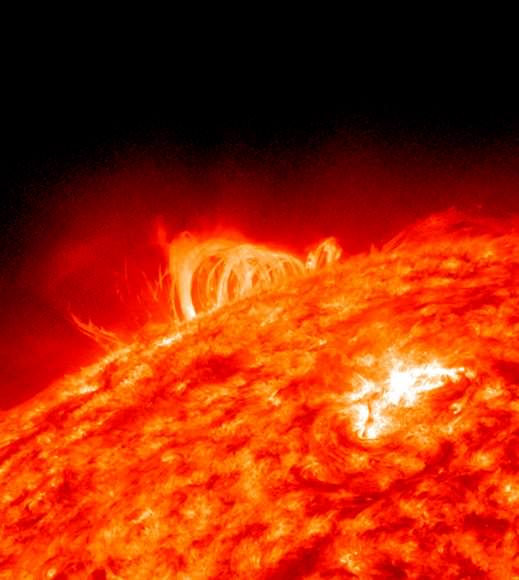
5. Solar Dynamics Observatory gives us a New View of the Sun
The Solar Dynamics Observatory launched in February of this year, and has been sending back a non-stop stream of data and images of the Sun like we’ve never seen before. SDO showed us almost up-to-the-minute views of a looping solar prominence, and have provided solar physicists with new details in helping them to understand the Sun.
SDO Soars To Study the Sun
SDO Wows with First Light Images
Near Synchronous Explosions Connect Across Vast Distances on the Sun
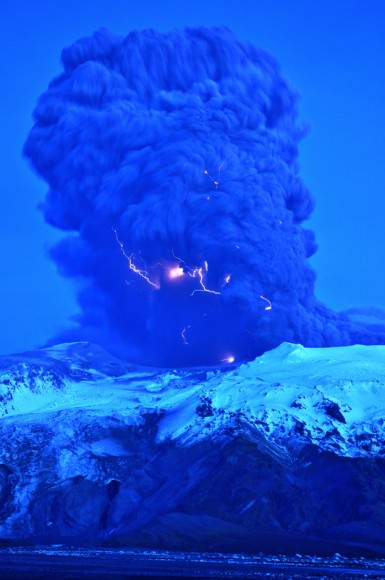
6. Eyjafjallajokull Volcano In Iceland Erupts
Astronomer Snaevarr Gudmundsson from Iceland was able to travel to within just a few kilometers from the Eyjafjallajokull volcano, and shared his incredible close-up images exclusively with Universe Today. “I stayed near the volcano from about 16:00 hours to 22:00 hours on Saturday and watched its impressive eruption,” Gudmundsson said in an email. “Amazing event, awesome explosions of 1200 °C hot magma reaching ice and water. I shot more than 550 images during these hours of continuous enjoyment. Sounds ridiculous but its ever changing appearance was never boring.” The volcano ash disrupted flights across northern Europe for several days. This article was one of our “most viewed” in 2010.
7. Obama Budget Proposal for NASA Ends Constellation Program; Proposes Asteroid Mission
In what is still an evolving story, President Obama proposed a new budget and destination for NASA, which has received both praise and harsh criticism since first announced on Feb. 1, 2010. After the Augustine Commission found that Constellation program was “fundamentally un-executable,” Obama’s new plan canceled the Ares rockets but add $6 billion for NASA over the next five years, focusing more on science and technology development, as well as providing money for commercial space development. For human spaceflight, instead of returning to the Moon, an asteroid mission was proposed. There’s been no decision yet on a heavy lift program. Congress wrangled with varied versions and ultimately passed a bill similar to Obama’s original proposal, and Obama signed it, but Congress has yet to approve the overall budget.
NASA Budget Details: Constellation Canceled, But Where To Next?
Obama Compromises; Brings Back Orion, Heavy Lift Sooner
President Signs 2010 NASA Authorization Act
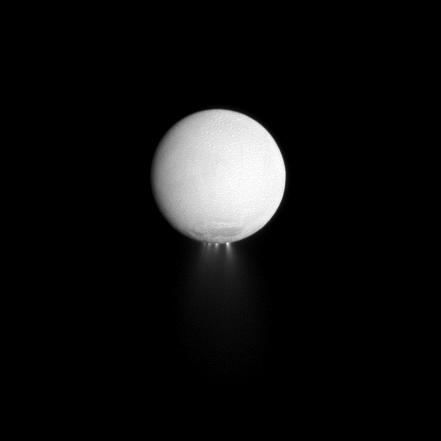
8. Enceladus and the Tiger Stripe Jets
2010 was the year we learned more about the geysers on Enceladus, and the Cassini spacecraft sent back more astonishing images of the geysers and the “tiger stripe” regions from which the geysers emanate. One new study even suggested that an exotic form of warm, bubbly mineral water could be what feeds the mysterious jets.
Warm Perrier Ocean Could be Powering Enceladus Geysers
Enceladus the Jet Powered Moon
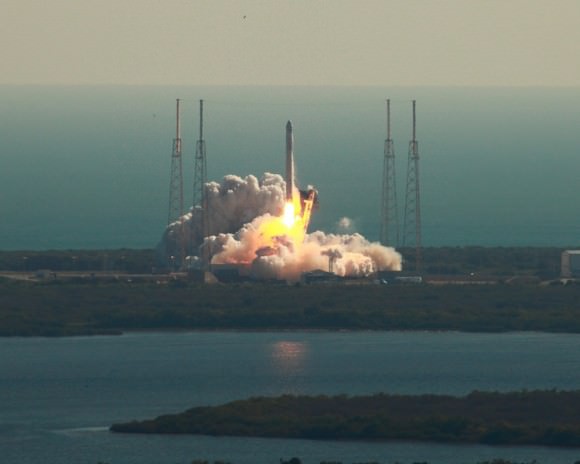
9. SpaceX Makes Great Strides in Commercial Space Endeavours.
SpaceX’s launch of the Falcon 9 and Dragon capsule leads the way for commercial companies to bring cargo and crew the International Space Station.
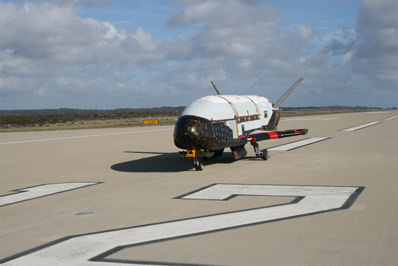
10. The Air Force’s launches the X-37b mini space plane.
In April, the Air Force launched the X-37B Space Plane, an unmanned version of the space shuttle. It’s mission was top secret, although amateur skywatchers had no trouble keeping track of the object in orbit, and Universe Today posted pictures of several sightings. We also had an article where Brian Weeden from the Secure World Foundation speculated on what the mini space plane could be doing in orbit. The X37B landed on Dec. 3, and we posted several post landing images and videos. The Air Force has still not disclosed the purpose of the long-duration mission.
11. Bacteria Found that can Live on Arsenic
Despite the pre-announcement hype, NASA did not find life on another planet, but found life here on Earth that can live and grow almost entirely on a poison, arsenic, and incorporates it into its DNA. This announcement was soon met with opposition — not only for the science, but for how the hype got completely out of hand.
12. Exoplanets Galore!
2010 saw a plethora of new exoplanet discoveries, including the first four-planet system that was imaged, the Kepler mission which found 750 exoplanet candidates, the observation of the atmosphere of aso-called “Super-Earth“, and the discovery of what astronomers think is the “youngest” exoplanet.
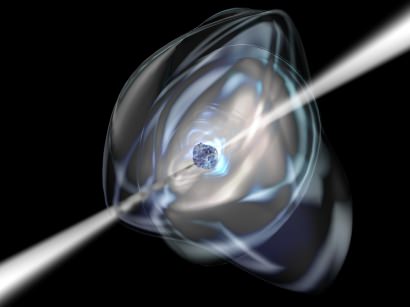
13. Faster Than Light Pulsars Discovered
Observational data from nine pulsars, including the Crab pulsar, suggest these rapidly spinning neutron stars emit the electromagnetic equivalent of a sonic boom, and a model created to understand this phenomenon shows that the source of the emissions could be traveling faster than the speed of light. Researchers say as the polarization currents in these emissions are whipped around with a mechanism likened to a synchrotron, the sources could be traveling up to six times light speed, or 1.8 million km per second. However, although the source of the radiation exceeds the speed of light, the emitted radiation travels at normal light speed once it leaves the source. “This is not science fiction, and no laws of physics were broken in this model,” said John Singleton of Los Alamos National Laboratory at a press briefing at the American Astronomical Society meeting in Washington, DC. “And Einstein’s theory of Special Relativity is not violated.”
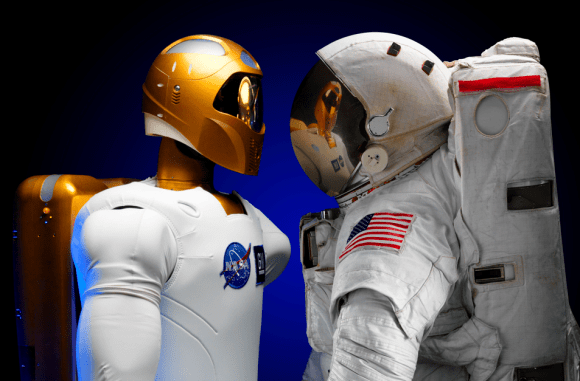
14. NASA Prepares to Send Humanoid Robot to Space Station
Robonaut 2, NASA’s second generation of dexterous robots with a human-like torso, will be heading up to the International Space Station on space shuttle Discovery’s final mission (currently scheduled for Feb. 2011, delayed from Nov. 2010. R2 captured the imaginations of space and science fiction fans, as it can work with tools and be manipulated to do many human tasks. For now, RS will work indoors at the ISS, but is envisioned to be able to do EVA work outside the station. Also going up to the ISS on STS-133 is the Permanent Multipurpose Module (PMM) a former Multi Purpose Logistics Module (MPLM) known as Leonardo. It was transformed to become a storeroom for supplies on the station. But it might also become a haven to get away from it all, and one manager thought it might become a sort of “Man Cave” for the ISS.
15. Lunar Elevator Could be Built within a Decade
This article created quite a bit of buzz on Universe Today. Entrepreneur Michael Laine believes a lunar elevator – a space elevator from the surface of the Moon – could be created with materials that are available now. With more research and the right amount of capital, Laine says a lunar elevator could be built within a decade.
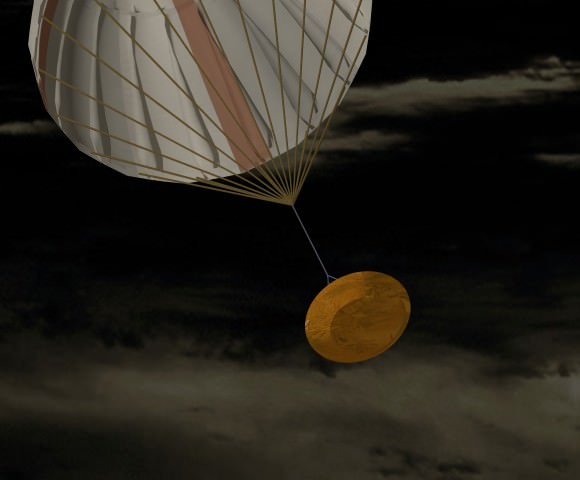
16. Hayabusa Returns To Earth with Samples of Asteroid
Japan’s little spacecraft that could returned to Earth this summer, making a fiery reentry in the Australian outback, overcoming several problems and obstacles. Later, scientists opened the sample return container revealing small particles which are likely from asteroid Itokawa.
17. More Mysteries of Titan Revealed
2010 was the year we learned more about Titan, as the Cassini spacecraft continues to send back more incredible images and data of Saturn’s largest Moon. Scientists were able to discern more about the weather on Titan, and they also saw clouds in the Moon’s atmosphere, plus one researcher found that Titan’s atmosphere could produce the building blocks of life, while another group found evidence of cryovolcanoes on Titan.

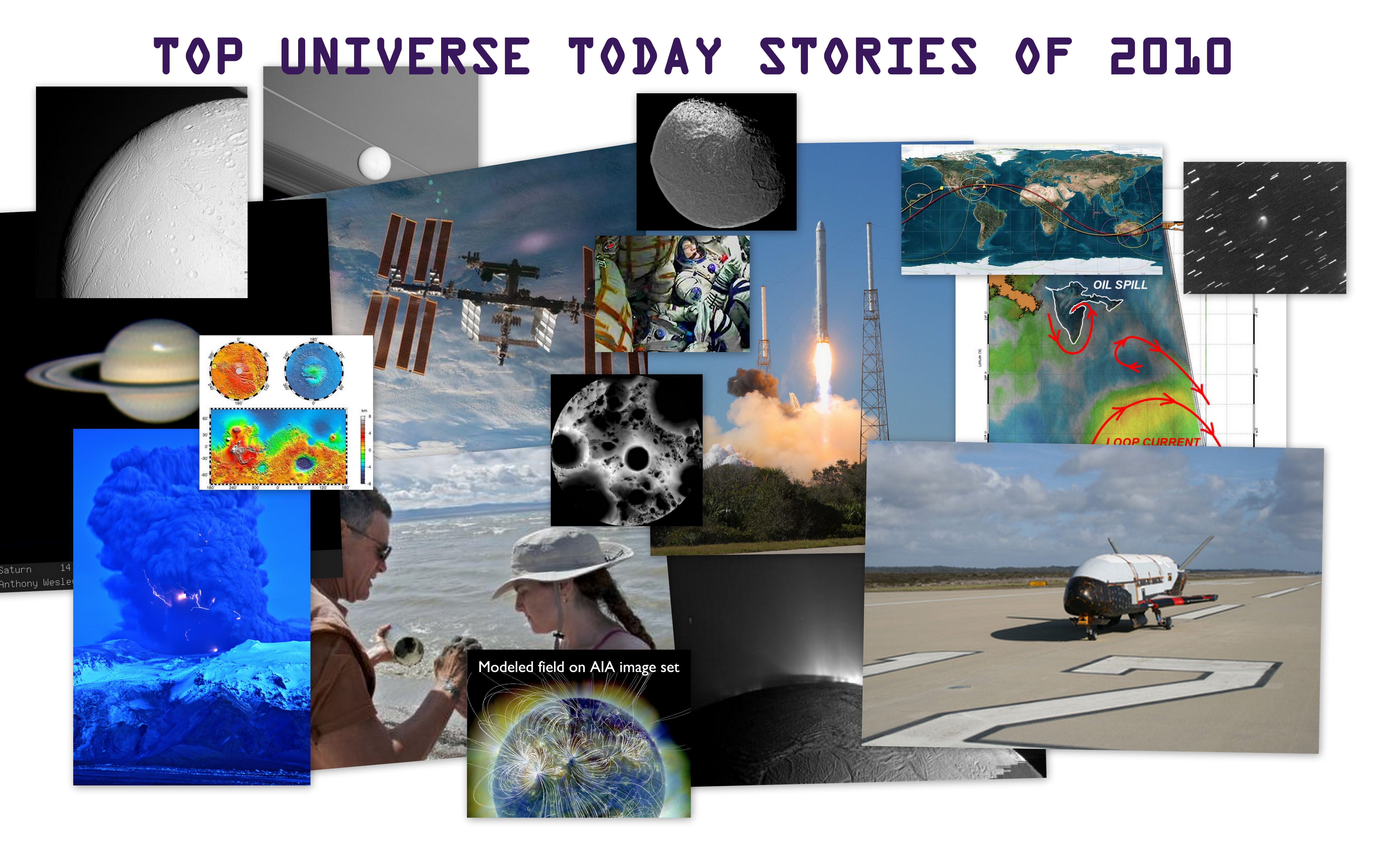
Thirteen Things That Saved Apollo 13
For the huge content and as it was a real pleasure having Jerry Woodfill answer our questions.
No dice, questionnaire doesn’t work in FF.
Try again. It works for me, and it was created in FF, so should work.
Right, it is there now. Maybe I needed to empty the cache too, likely my NoScript acted up.
It did for me in firefox
NASA budget for sure ^^
I also notice most of these contenders you list here are space science rather than astronomical related. Pity.
The number one story has to be ESA’s Herschel Space Observatory. Is addition to our knowledge in the far infra red and the sub-millimetre. It is doing “killer astronomy”, whose results will be analysed for decades to come.
Not a US or NASA based story, so I presume it doesn’t count as important. Again, Pity.
(Finally, all the stories without the PU/EU nutters! Other than that, it has be a joy to read all of the submissions. At least they are wildly ranged and stimulate the mind. Will done to the contributors, I’d say! Cheers.
“Not a US or NASA based story….”
But NASA and JPL have made important contributions to Herschel (including the Herschel Science Center, part of IPAC): http://www.herschel.caltech.edu/index.php?SiteSection=Mission&MissionSection=Contributions
Yeah. You are absolutely right.
I cannot think of any excuse why it didn’t make the Top 10 Stories, though!
Cheers!
Ah! I see that the list has been compiled for me this year, meaning that I cannot waste a day at work going through the archives. I also noticed the skewedness towards space science rather than more pure astronomy-based stories. Oh well – I guess that must be what the more significant portion of UT readers are into. Nevermind – maybe I will go through the archives and opine on what my fave science stories were from this year!
Off the top of my head though:
– Herschel and Plank rocked my world this year.
– NASA’s WISE observatory. Stunned me all year.
– confirmation of Voyager entering the Heliosheath.
– Spirit dying on Mars (cummon – we all know she’s gone…).
I’m sure there’s more rattling around in my head somewhere…
Yeah. You are absolutely right.
I cannot think of any excuse why it didn’t make the Top 10 Stories, though!
Cheers.
Exoplanets, exoplanets and exoplanets.
But I read almost every article. 😀
Exoplanets!
Thanks to all at UT for your hard work in presenting us with the stories. I look forward to 2011.
Holiday cheers to all.
I’m with Uncle Fred and HeadAroundU, exoplanets. Go Kepler! I eagerly await more outstanding articles from UT in 2011. Merry Christmas and Happy New Year to all.